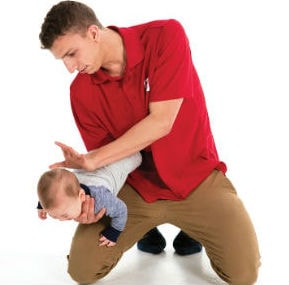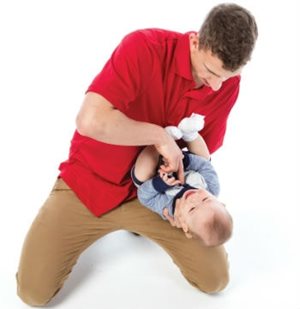You have just expanded your family and the youngest is less than a year old. One minute, you hear him chirping and then suddenly, he is choking on some random object lying around.
What do you do?
If this happens to you someday, you won’t have time to search for "baby choking" online, so we encourage you to register for a
First Aid course and remember the following instructions - even if you are not a parent or caregiver.
What to do in case of partial choking
Partial choking happens when the airway is partially blocked. Coughing is the body’s way of clearing the airway, and so it may indicate a partial airway obstruction. A baby who is coughing is still able to breathe, do not hinder his efforts to expel the object. Stay with him and watch him closely.
What to do in case of choking
Call
- Shout for help to try to get the attention of a bystander or a family member to assist you.
- If the baby is making high-pitched noises, is wheezing, can no longer make a sound, or becomes too weak to cough, have someone call EMS/9-1-1. If you are in a public place ask someone to see if there is an AED, while you care for the baby.
- If you are alone, immediately begin care for complete choking and continue to shout for help.
Care

1.
Sit or kneel holding the baby.
2. Position the baby face down along your forearm, holding his or her jaw in your hand.
3. Rest your forearm on your leg so that the baby’s head is lower than his or her body.
4. Deliver 5 firm back blows between the shoulder blades with the heel of your free hand.

5.
If the object has not been dislodged, turn the baby face-up, ensuring you support the head.
6. Place 2 fingers on the middle of the chest just below the nipple line and quickly deliver 5 firm chest compressions, pushing down 1/3 of the chest’s depth.
7. Repeat the 5 firm back blows and 5 chest compressions until the object is coughed up, the baby starts to cry, breathe, or cough, or the baby becomes unresponsive.
Please note that these tips provided by our Prevention and Safety team are for reference only and are not a substitute for first aid training. To find a course near you, click here.
You can also download the free Red Cross First Aid app to always have practical resources at your fingertips.